Ten thousand balloons drifted into the cerulean sky as Yoshinori Sakai jogged up the 163 steps leading into the stands of Japan National Stadium.
The 19-year-old Sakai, born just 90 minutes after the atomic bomb fell near his hometown in Hiroshima Prefecture, was the last of 100,000 runners who had relayed the Olympic torch over some 26,000 km from Olympia, Greece, culminating in the ceremonial igniting of the Olympic cauldron to mark the start of the 1964 Summer Games in Tokyo.
Immediately, hundreds of doves were released, and the better informed athletes and officials watching from below promptly unveiled pamphlets and papers to protect themselves from a different type of fallout.
Compared to the razzle-dazzle of more recent Olympic kickoffs, balloons and birds may seem a touch lame, but in many ways the Games of the XVIII Olympiad marked a milestone in the modern games’ 68-year history.
The first Olympics to be held in Asia, Tokyo 1964 not only confirmed Japan’s peaceful postwar re-integration into the international fold, but also served as a symbol of its modernization, amply reflected in the architecture of the venues and ambitious infrastructure projects, images of which were broadcast live via satellite — another games first.
Dubbed “the ¥1 trillion Olympics,” it was, at the time, the most expensive in history, using up a huge chunk of Japan’s national budget. At 3.7% of GDP, the 1964 Olympics remains the silver medalist in terms of cost, with the dubious honor of gold going to Athens in 2004 (5.4%).
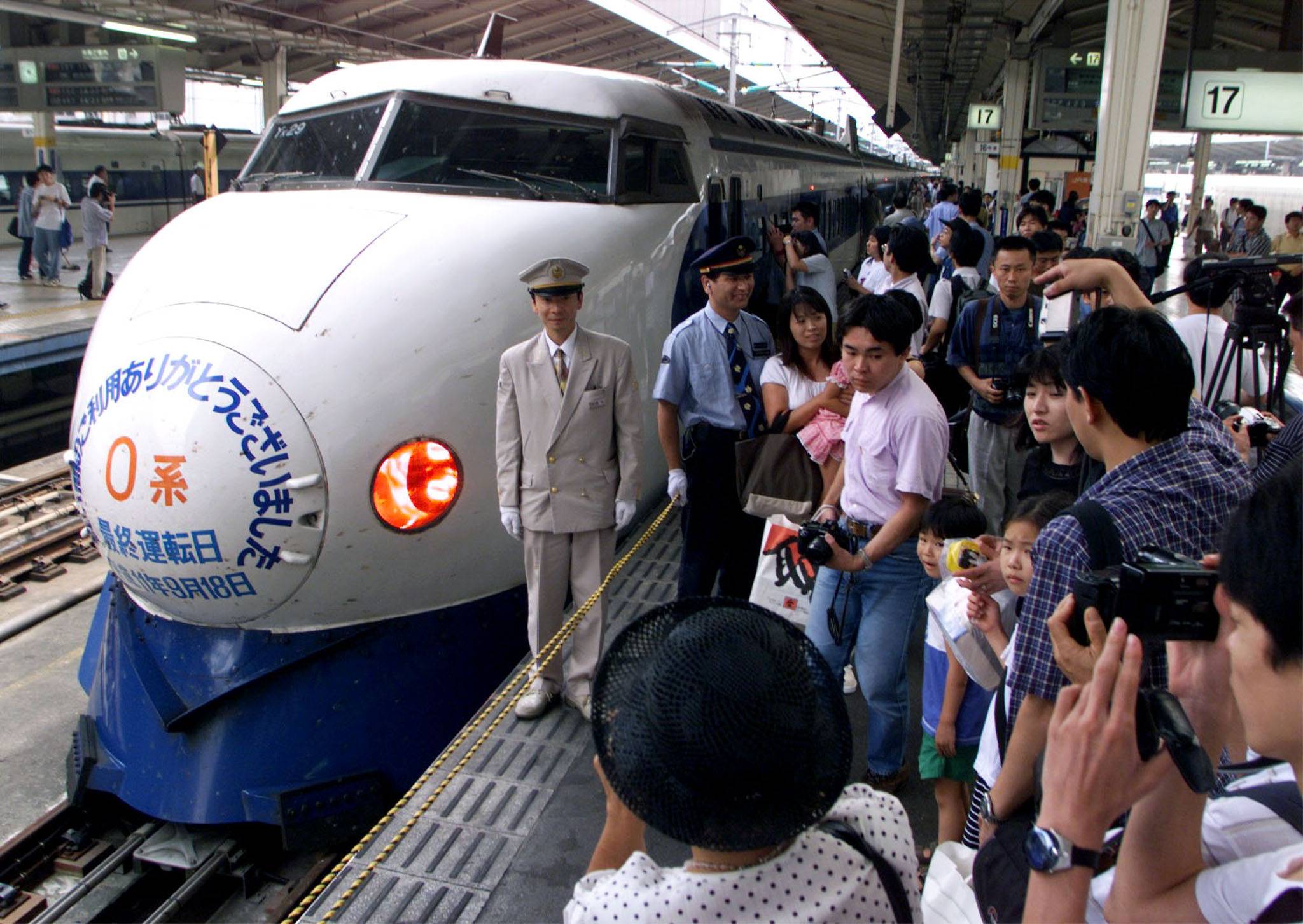
This included some infrastructure, such as the Tokaido Shinkansen line linking the capital and Osaka and a metropolitan expressway, that was ostensibly erected for 1964, but would have materialized anyway as the country continued along the road to economic recovery.
But even after being awarded the games in 1959, there was much to do to prepare the capital, which urban anthropologist Masakazu Toki writes in “Tokyo Orinpikku to Nihonjin no Identity” was “messy and disorderly” and “too dirty and embarrassing to be seen by foreigners.”
Efforts were made to ameliorate high pollution levels, which Toki says “turned the sun red” and caused a “terrible stench” in the Sumida River, aka “Death River,” while roads struggled to contain escalating vehicle volume and driving practices — 30 hit and runs daily prominent among them — that spawned what Toki calls “traffic war.”
Public morals and manners, which an Asahi Shimbun column declared were “in disarray,” also came under scrutiny.
And then there was the matter of the stadia and facilities. Even though it had held the Asian Games six years earlier, Tokyo simply didn’t have enough venues to host a global event such as the Summer Games.
What did exist — including the main stadium — had been erected for Asiad 1958, but anything else was purpose-built for 1964, and served either as a show of Japan’s industrial and technological capabilities, or as an architectural feast for the imagination.
Ultimately the goal, says Takahisa Furukawa, a professor of contemporary Japanese history at Nihon University, was to show a nation “on the way to becoming a leading economic power… symbolized by a cutting-edge cityscape that captured the spirit of the times.”
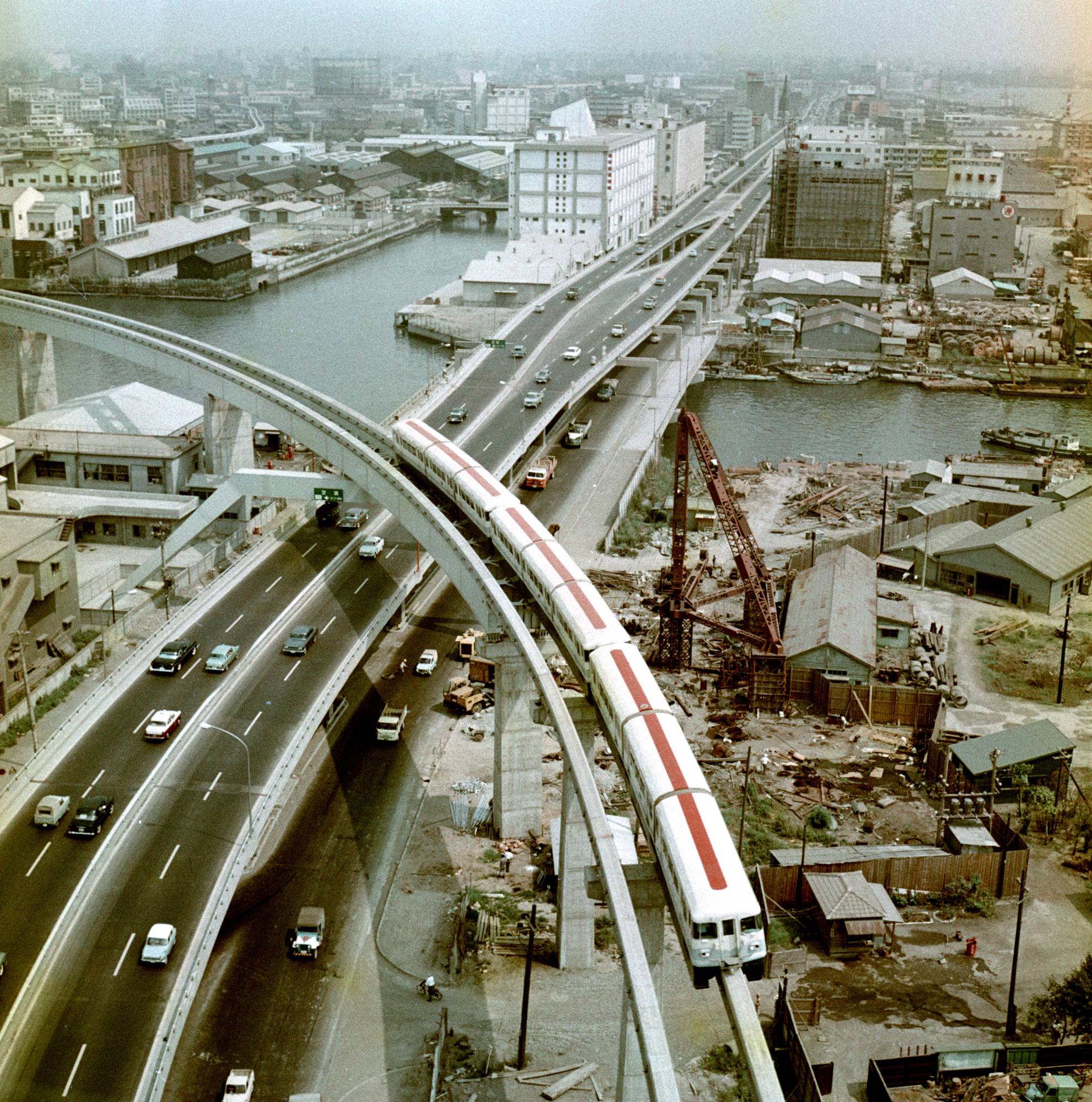


The shinkansen line and metro expressway, which sliced through the capital, “altered the urban fabric significantly,” says Furukawa, whose research includes historical and cultural examinations of the ’64 Olympics and the canceled Tokyo Games in 1940.
“The further away you went from the expressway, the more ramshackle Tokyo was, but nearer by… was characterized by new boulevards and concrete apartment blocks and futuristic structures,” he says.
This was especially noticeable near the rail terminals of Shibuya and Shinjuku, and the area sandwiched between what is today Yoyogi Park and the outer garden of Meiji Shrine, where chic cafes and boutique stores opened one by one on the ground floors of those pristine apartments, Furukawa says.
These two green zones also happened to be the focal points of the most prominent Olympic venues and, in the case of the Yoyogi Park side, the most adventurous.
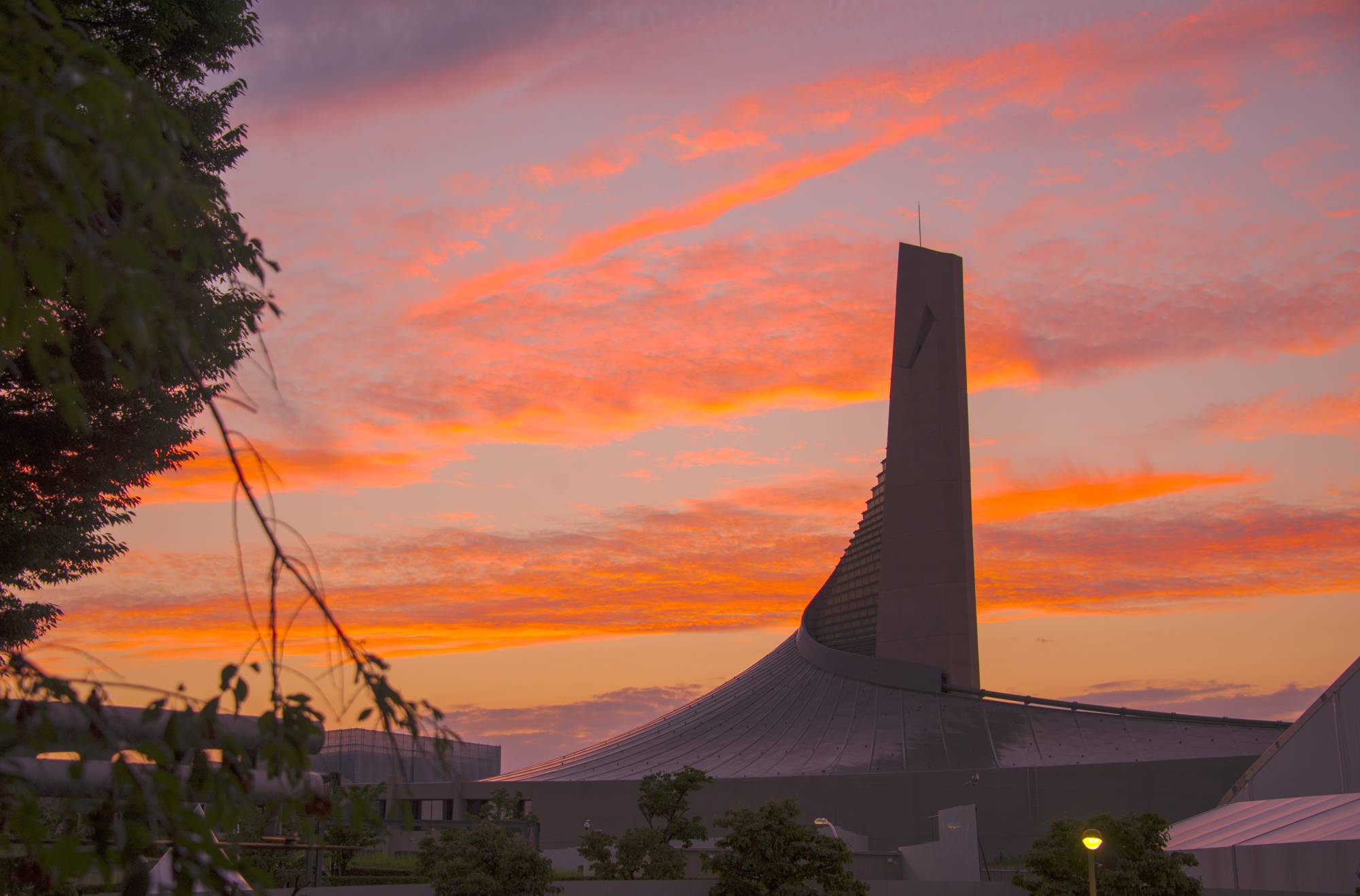


Among them was the Kenzo Tange-designed National Gymnasium, which even today catches the eye. The sweeping curves of the suspended roof was a nod to traditional Japan aesthetics, and an audacious display of technical bravado, a world first that adapted a modern Western architectural technique usually preserved for bridges to ensure an uninterrupted view of the aquatics events inside.
Some researchers have proposed an underlying symbolism in Tange’s work because of its proximity to the Meiji Shrine, which is dedicated to Emperor Meiji, the late 19th-century monarch who became a symbol of post-feudal era Japan’s modernization.
Furukawa looks at more practical considerations, namely a shortage of developable options in the capital (the ¥2-billion Budokan, rushed through after an eleventh-hour decision to hold the judo events there, was even squeezed onto a patch of Imperial Palace land.) Furthermore, at the time, Shinto shrines were “less highly regarded” due to the role of “state Shintoism” in Japan’s war effort and few visited Meiji Shrine to pray or celebrate the start of a new year as they do today, he says.
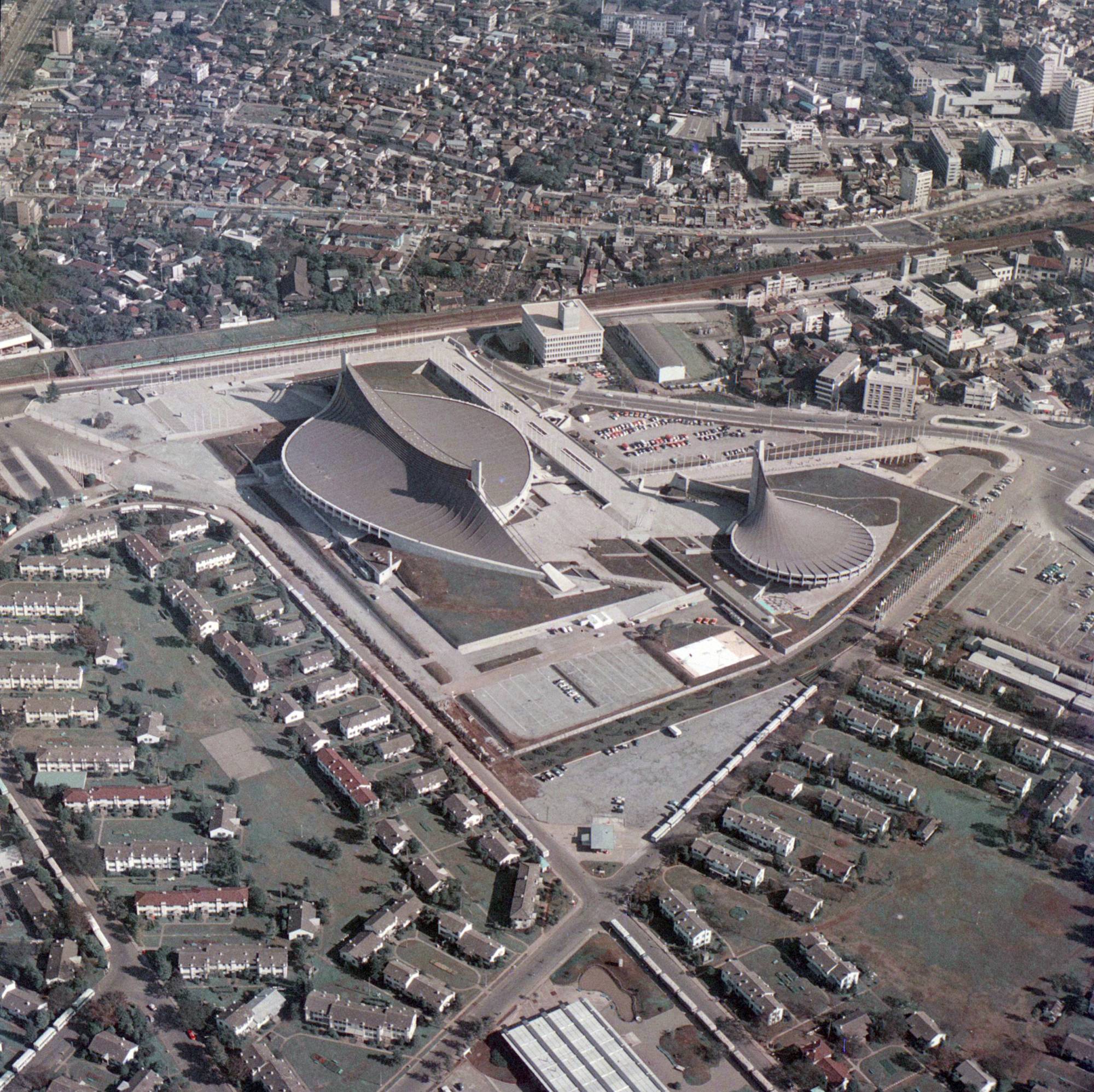


During the Allied Occupation, Yoyogi Park itself had been a U.S. military housing complex, which was returned to Japan for the purpose of the Olympics and its 820-plus wooden units turned into the athletes’ village.
The sheer scale of that compound is revealed on a bronze legend atop a modest Olympic memorial, hidden away in the southern part of the park. In addition to multiple accommodation and training zones, it lists a theater, shopping center, swimming pool, sauna and bathing area for the 7,000 athletes and coaches who stayed there.
There was also the cavernous Fuji Dining Hall, famed for gargantuan speakers relaying the ethereal sounds of sanukite rock chimes, composed by contemporary musician and poet Kuniharu Akiyama.
One popular magazine reported the cafe as also being a den of iniquity, not among athletes, but the university students who were employed there, some working as kitchen hands for head chefs from Tokyo’s most luxurious hotels — among them the recently completed 1,600-room Tokyo Prince, and 17-story New Otani — who were drafted in for the event.
Only one of the athletes’ village structures survives — a white-and-blue wooden hut used by members of team Netherlands that’s tucked away in a shady corner, just a short walk from youth culture central, Harajuku. Today it mostly serves as a backdrop for teenage dance vloggers and butterfly-chasing children, though English signs around the perimeter proffer what is perhaps a profound message: “Icannotenter (sic) the lodgings of the Olympic Memory.”



Another construction testing the lodgings of Olympic recollection can be found at the nearby Olympic Bridge, which crosses the train lines as Route 413 doglegs into leafy Omotesando, Tokyo’s veritable chic street and home to its first so-called okushon (¥1 hundred million apartment) — Coop Olympia, built in 1964.
Completed just days before the opening ceremony as part of a road improvement project connecting the athletes’ village with the National Stadium, few would have stopped on this unremarkable overpass, as the colorful globe-topped pillars and games-themed stone reliefs were added more than two decades later as a bubble-colored afterthought.
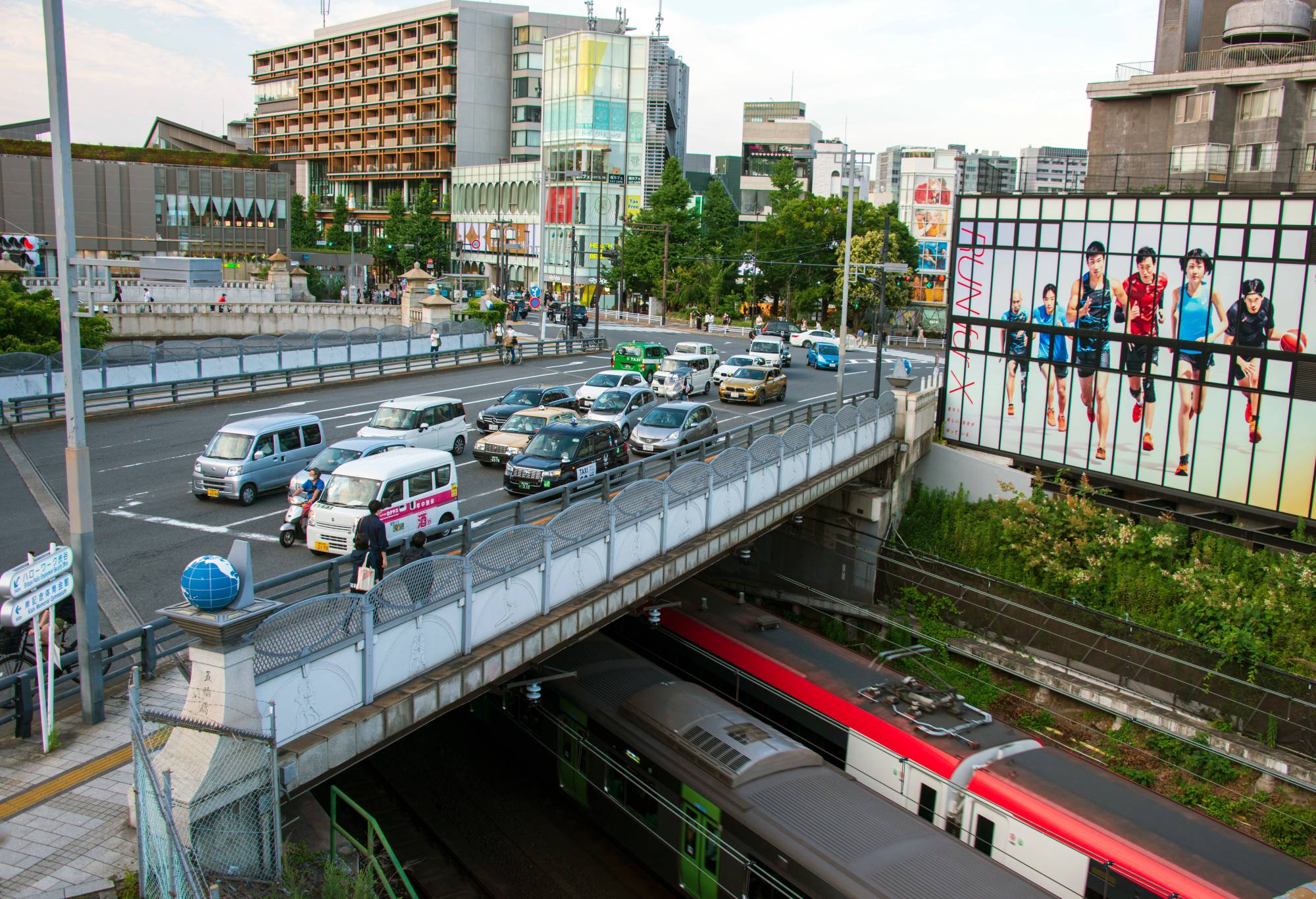


Not all events took place in central Tokyo. Road and track cycling races were held in the western suburb of Hachioji, and while the state-of-the-art velodrome was dismantled immediately after the games — despite vociferous opposition from sporting bodies — the Olympics lives on through the improvements made to roads and other infrastructure, and a traditional annual festival that was hybridized in the 1960s to commemorate the games, says Masayuki Takao, a professor of sports history at Tokai University.
The mayor at the time, Enji Uetake, devoted considerable effort to bring the games to the city, which was fast becoming a Tokyo satellite town attracting industrial complexes and new residents as part of a policy to decentralize overpopulated inner-city districts, says Takao, who has authored a book about Hachioji and the 1964 Games.
He also campaigned to beautify and sanitize the city and instill a “sense of unity, belonging and civil pride” in newcomers and more longstanding, traditional industry-loving residents through various shinsetsu undō (morality campaigns), including a gratuity umbrella service that continues to this day, Takao adds.
“One way of looking at Hachioji’s legacy,” says Takao, “is that, unlike elsewhere in 1964 and this time in Tokyo 2020, it chose to prioritize improving citizen welfare over leaving behind flashy structures.”
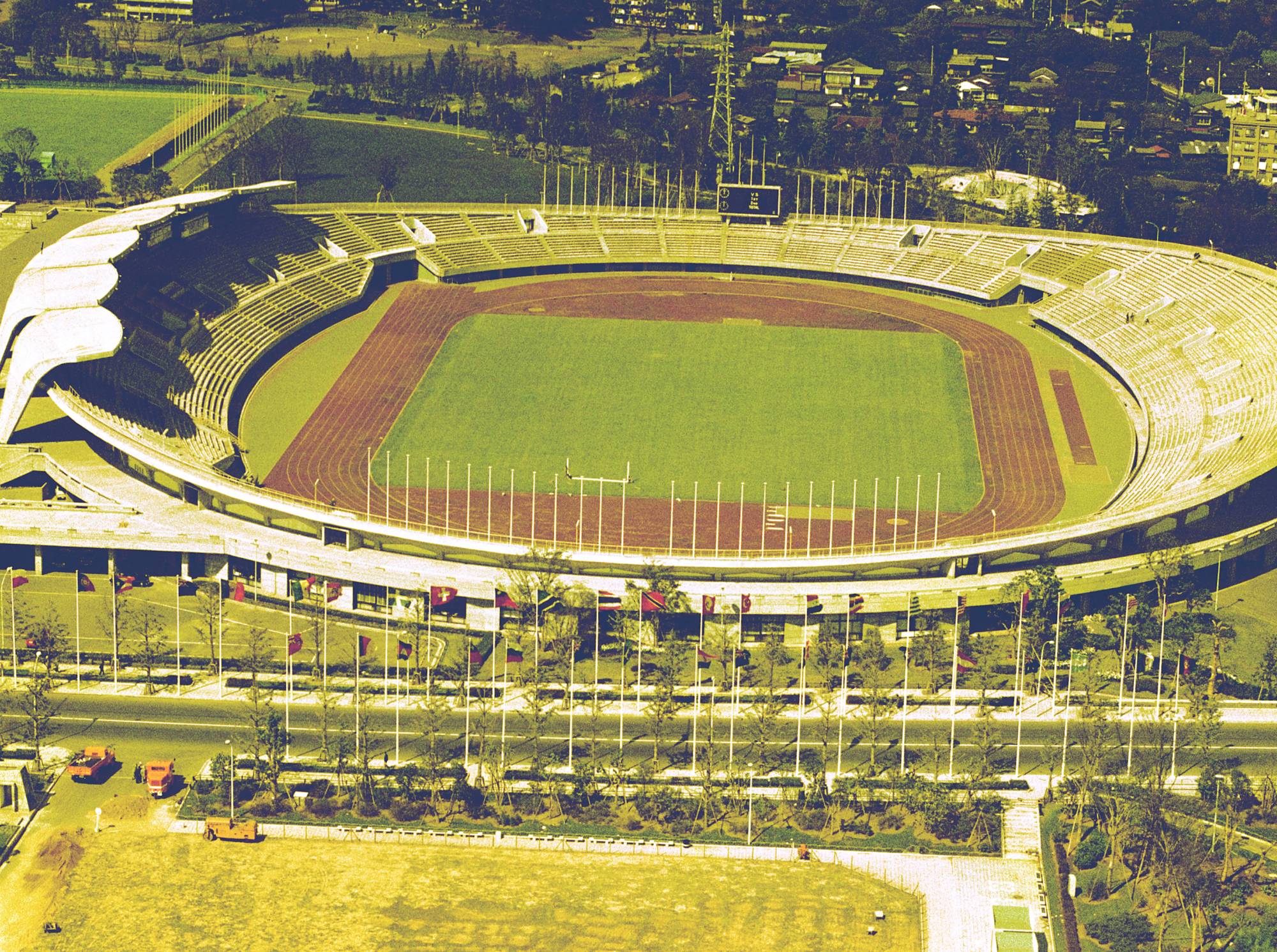


Not all Tokyo 1964 venues are of this ilk — the otherworldly Komazawa Olympic Park complex closer to the metropolis center appears to get plenty of public use.
The old National Stadium in Meiji Olympic Park, too, was frequently used for sports, music and other events, before being demolished in 2015 and replaced with a new Kengo Kuma-designed National Stadium.
A noteworthy survivor of that former arena is the cauldron that Sakai lit to kick things off 57 years ago, a moment that for many Japanese, remains spine-tinglingly symbolic in the country’s modern history.
This was certainly true for Akishige Suzuki, who watched on as one of the 85,000 spectators inside the stadium, his “eyes brimming with tears” — a natural reaction for a man who had helped cast the 2.6-ton, 2.1-meter-high vessel at his family’s foundry in Kawaguchi, Saitama Prefecture.
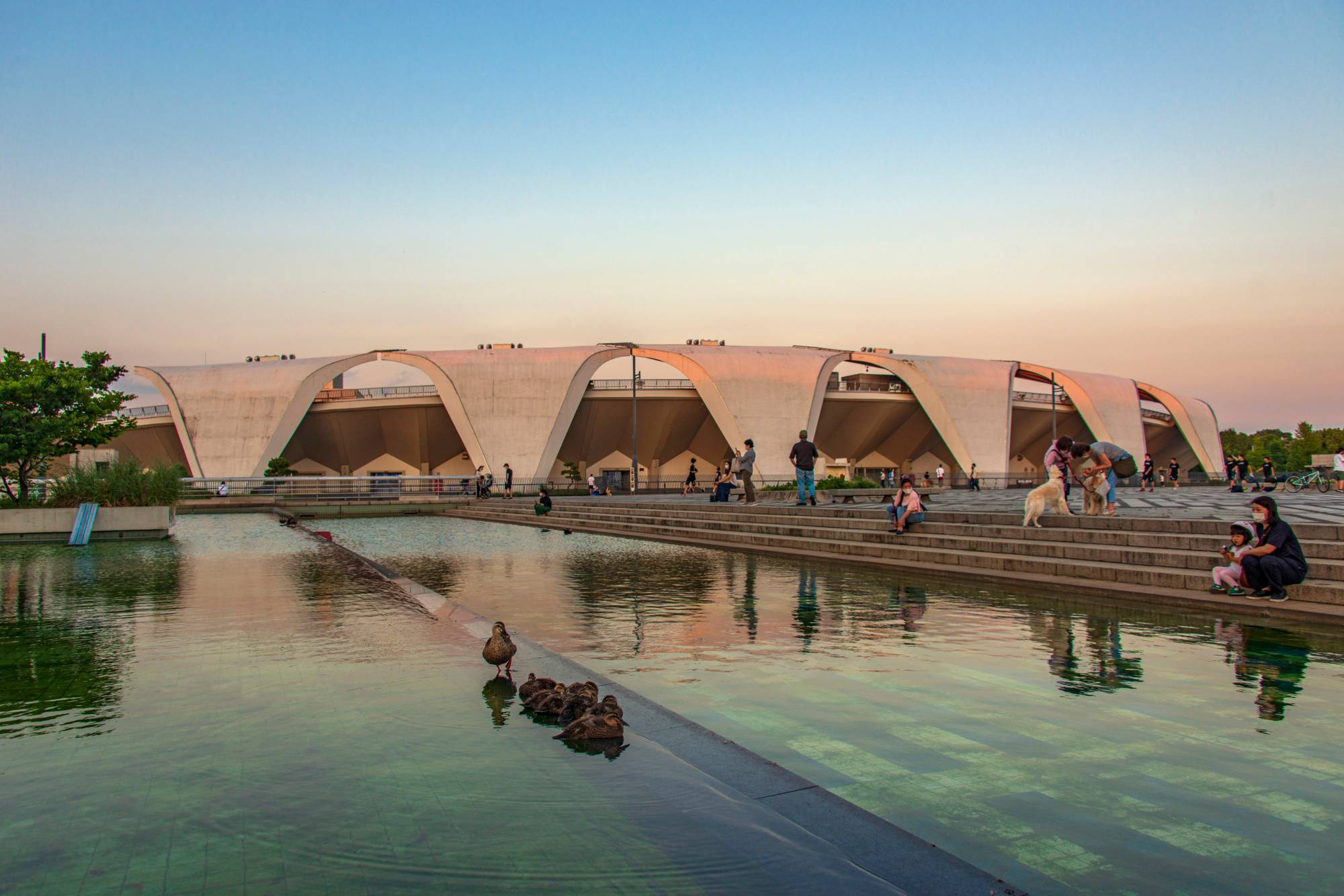


It was Suzuki’s retired father, Mannosuke, who accepted the challenge of molding the cauldron, after nobody else — Akishige’s eldest brother, Koichi, included — would touch it. Not only were they put off by the complexity of the job and the two-month turnaround, but also the fee, which at ¥200,000 was several times below budget, Suzuki says.
Mannosuke saw this as a chance to put Kawaguchi’s founding industry on the world map, and along with his apprentice, Akishige’s third brother, Bungo, set about molding the massive vessel in yet another first for Japan.
Ultimately they failed, defeated, says Suzuki, by one single bolt, which burst its binding, precipitating a gaping wound-like hole in his work.
It would be Mannosuke’s final cast — he died a week later aged 68 — though his effort, known as “Cauldron No. 1” and inscribed with his name, was later repaired and sits today inside Kawaguchi’s Aokiku Park.
In the nick of time, the brothers also completed a second cauldron, the one ignited by Sakai in 1964, which today is displayed in the grounds of the new National Stadium.
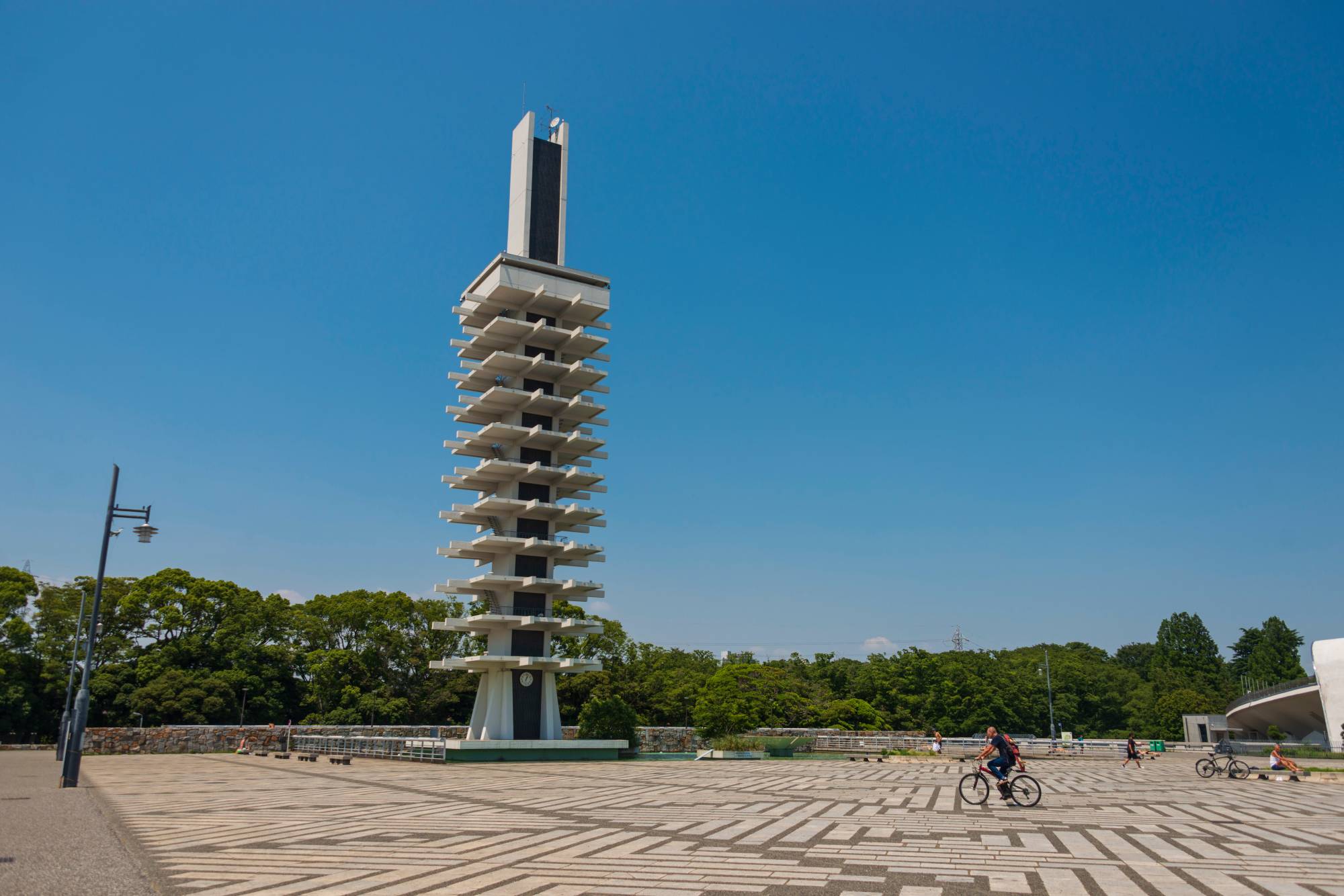


Suzuki, 86, was scheduled to take part in the torch relay on July 6 — coincidentally, the day Koichi died 13 years ago. The starting point of the leg was beside Cauldron No. 1 and Suzuki says that in his heart he intended to do the run “hand in hand” with his deceased father and siblings.
Sadly, all legs of the Kawaguchi stretch were canceled in late June due to the coronavirus pandemic, but Suzuki says any disappointment he feels is tempered by memories of 1964, when he watched Sakai’s climb to the cauldron and thought, “One day I want to do that myself.”
“I remember that day like it was yesterday, the balloons and doves, the planes above drawing the Olympic rings into the clear blue sky,” he says. “It was magical. Anything seemed possible.”
In a time of both misinformation and too much information, quality journalism is more crucial than ever.
By subscribing, you can help us get the story right.
SUBSCRIBE NOW


